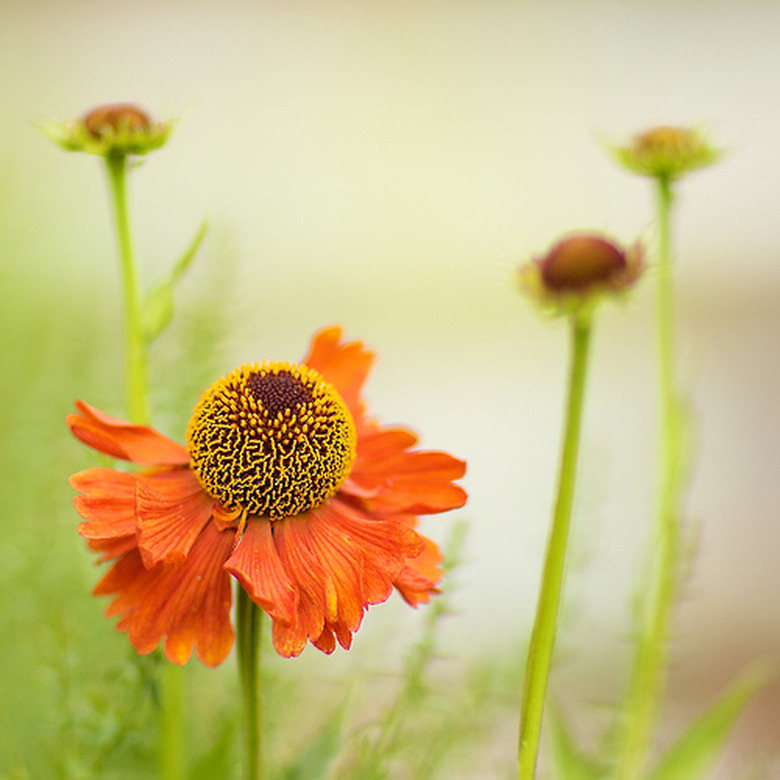How To Grow Sneezeweed
Things Needed
- Organic compost
- Tiller
- Fertilizer
- Hay
Tip
A moisture retentive soil is necessary to hold plenty of water for sneezeweed. However, it must still be well-drained, so that once the soil is saturated and water accumulates, the plant will not rot. A spade can be used in place of a tiller. Evergreen boughs can be used in place of hay.
Sneezeweed is the common name for the plant species Helenium autumnale. The leaves were once dried and inhaled to induce sneezing and cast evil spirits from the body, which is how the plant came by its common name. Sneezeweed is a perennial herb that grows to about 4 feet in height and produces flowers in the spring which can be yellow, red or bronze. It lives for four to five years, and requires little care to grow in most temperate environments.
Step 1
Plant sneezeweed seeds during spring in a location that receives full sunlight and has fertile, well-drained soil. Spread 2 inches of organic compost over the planting site, and use a tiller to incorporate it into the soil to increase drainage, water retention and fertility.
Step 2
Sow the seeds about 2 inches deep and cover with soil. Water lightly to compact the moist soil around the seeds. Continue to water once per week until germination has occurred and the sprouts emerge from the ground. Space plants about 12 inches apart to prevent crowding.
- Sneezeweed is the common name for the plant species Helenium autumnale.
- Spread 2 inches of organic compost over the planting site, and use a tiller to incorporate it into the soil to increase drainage, water retention and fertility.
Step 3
Water sneezeweed twice per week after emergence. Never allow the soil to dry out, or the plant will quickly wilt. Soak the soil completely during each watering to ensure it is holding as much moisture as possible.
Step 4
Feed sneezeweed with a balanced slow release fertilizer once every spring, just before growth begins. Follow the manufacturer's instructions for proper application and dosage. Water thoroughly before and after applying to prevent root burn.
Step 5
Remove any dead flowers as soon as possible to encourage the plant to focus on flowering instead of forming seeds. Cut sneezeweed plants back to half height in late June to make the foliage thicker and increase flower production the following spring.
- Water sneezeweed twice per week after emergence.
- Feed sneezeweed with a balanced slow release fertilizer once every spring, just before growth begins.
Step 6
Spread a 6-inch layer of hay over sneezeweed plants just after the first frost of winter. This will insulate the soil and prevent continual freezing and thawing cycles, which can damage the plant. Remove the hay in early spring to allow growth to resume.
References
- Book: Taylor's 50 Best Perennials for Sun; Frances Tenenbaum; 1999
- Book: The Sunny Border; C. Colston Burrell; 2002
- Book: Carefree Plants Guide; Reader's Digest; 2002
